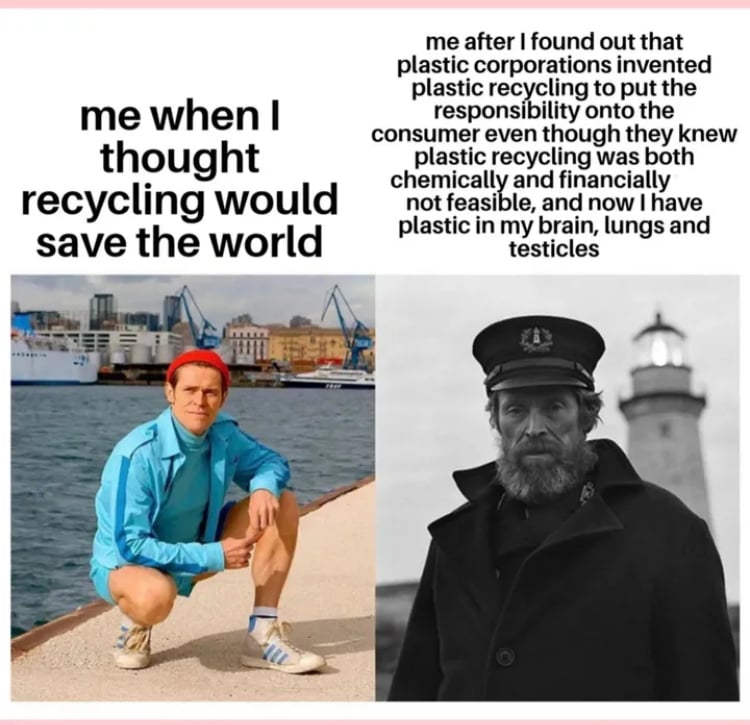this post was submitted on 24 Feb 2025
745 points (98.1% liked)
zerowaste
1531 readers
930 users here now
Discussing ways to reduce waste and build community!
Celebrate thrift as a virtue, talk about creative ways to make do, or show off how you reused something!
founded 2 years ago
MODERATORS
you are viewing a single comment's thread
view the rest of the comments
view the rest of the comments

I'm not a plastic or environmental specialist, so I can't say. Surely you don't expect me to know all the answers, do you? Come on, now.
I'd think regulation would encompass all the things you mentioned, possibly more like subsidizing the use of non-plastics in industrial applications, for example.
My point is that regulations are likely insufficient.
What we really need is a reduction in consumption. We need to stop living life as "dedicated waste manufacturers".
Here's a useful article to help get over the limits of regulations: https://donellameadows.org/archives/leverage-points-places-to-intervene-in-a-system/
Regulations are not inefficient. Bad regulations are inefficient
Did you link the wrong thing?
Obviously, individuals also matter. Vote with your wallet, always.
However, pointing the finger at consumers seems fruitless? People will do the most convenient thing, not the best thing. As such, I'd suspect it best to make the most convenient thing equal the best thing.
I'm not trying to say that pushing for anti-consumerism and sustainable consumption is wrong---as a matter of fact, I think that's great and it's something I do, personally---but I do think that, at the end of the day, if disposable plastic bags are handed out, people will use them; if fruits are wrapped in plastic, people will use it; if plastic straws come with drinks, people will use them; if disposable cutlery is for sale, people will buy it. The solution is, therefore, to regulate this stuff. Maybe ban it, even.
I linked to the right thing, a great introduction to understanding how to change systems:
PLACES TO INTERVENE IN A SYSTEM
(in increasing order of effectiveness)
12. Constants, parameters, numbers (such as subsidies, taxes, standards).
11. The sizes of buffers and other stabilizing stocks, relative to their flows.
10. The structure of material stocks and flows (such as transport networks, population age structures).
9. The lengths of delays, relative to the rate of system change.
8. The strength of negative feedback loops, relative to the impacts they are trying to correct against.
7. The gain around driving positive feedback loops.
6. The structure of information flows (who does and does not have access to information).
5. The rules of the system (such as incentives, punishments, constraints).
4. The power to add, change, evolve, or self-organize system structure.
3. The goals of the system.
2. The mindset or paradigm out of which the system — its goals, structure, rules, delays, parameters — arises.
1. The power to transcend paradigms.
Regulations are important, but low(er) impact.